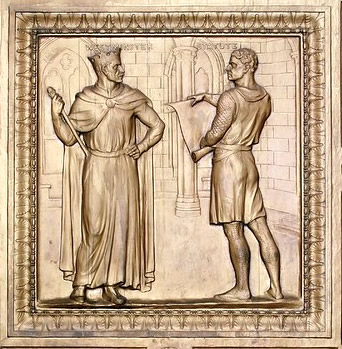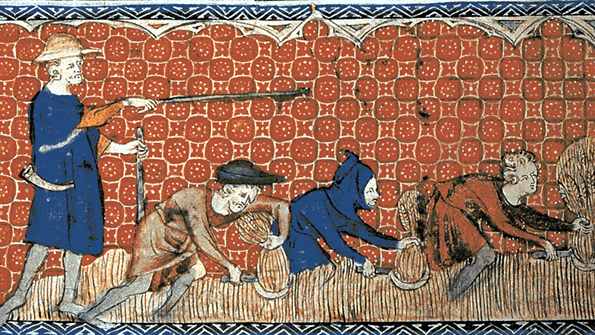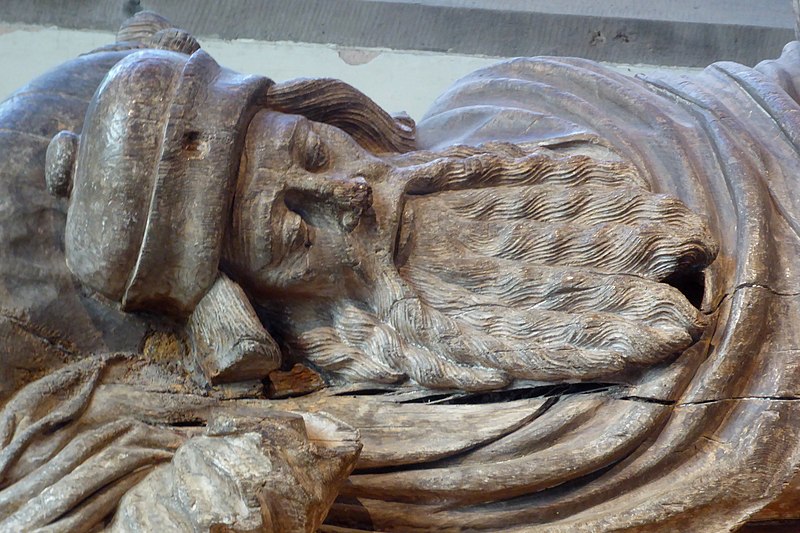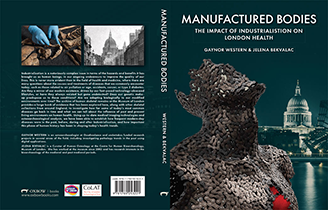Defining old age in the pre-industrial period
Precisely how many people lived into old age before census records began is difficult to ascertain. Although some early burial records do exist, many are incomplete and do not cover the earlier parts of the medieval period.
Nonetheless, some early statutes delivered by Westminster record exemption from public duties and prohibit some physical work roles based on age. These exemptions however pertain to males, so what constituted old age for females is not referred to. In the 1285 Statute of Westminster II, it is stated that ‘A man may not be required to serve as a juror if he be in truth 70 years of age for that is the age prescribed by the Great Council as the limit of service.’

Panel from the U.S. Supreme Court Bronze Door panels (Photo credit: https://www.flickr.com/photos/robertmiller/4440987... CC by SA 2.0)
The Statute suggests then that by 70 years old, a male individual was considered not to have been of sound enough judgement to act as a juror. Senescence seems to have been recognised as being associated with memory loss or diminished cognitive abilities in some way. It is also of note that requiring a man to be ‘in truth’ 70 years of age, some may not have known their exact age or may have conveniently pretended to be older to escape their obligations. Being in denial of your age seems not to be a modern phenomenon! Today, although there are no exclusions on being a juror based on being elderly per se, you can apply to be exempt if you are 70 years old, so this threshold is still recognised in law as being ‘too old’ for some to serve as a juror, some 737 years later.
In consideration of physical fitness and age, the Statute of Labourers passed in 1349 specifies that certain physical tasks should not be carried out by labourers after the age of 60. Certain roles were recognised as being beyond the physical capabilities of males at 60 years old and that after that age, they were dangerous. This very much reflects the findings in today’s Health and Safety reports that older males in the workplace were much more likely to have accidents. From 2017-18, 96% of worker fatalities occurred in males and 40% were over the age of 60, despite representing only 10% of the workforce.
In the later medieval period in 1607, Henry Cuffe defined being between 50 and 65 years old as ‘a will and readinesse to be doing’ compared to enthusiasm waning and being in decrepit old age over 65 years. Similarly, John Smith in 1666 defines the final phase of growing old as being ‘sickly decrepit and overgrown, where their breath is corrupt, their daies extinct and the grave ready for them.’ Though these benchmarks of 60-70 years for defining old age in the early medieval period are still consistent today, we are perhaps a little more generous in our attitudes towards the elderly!










